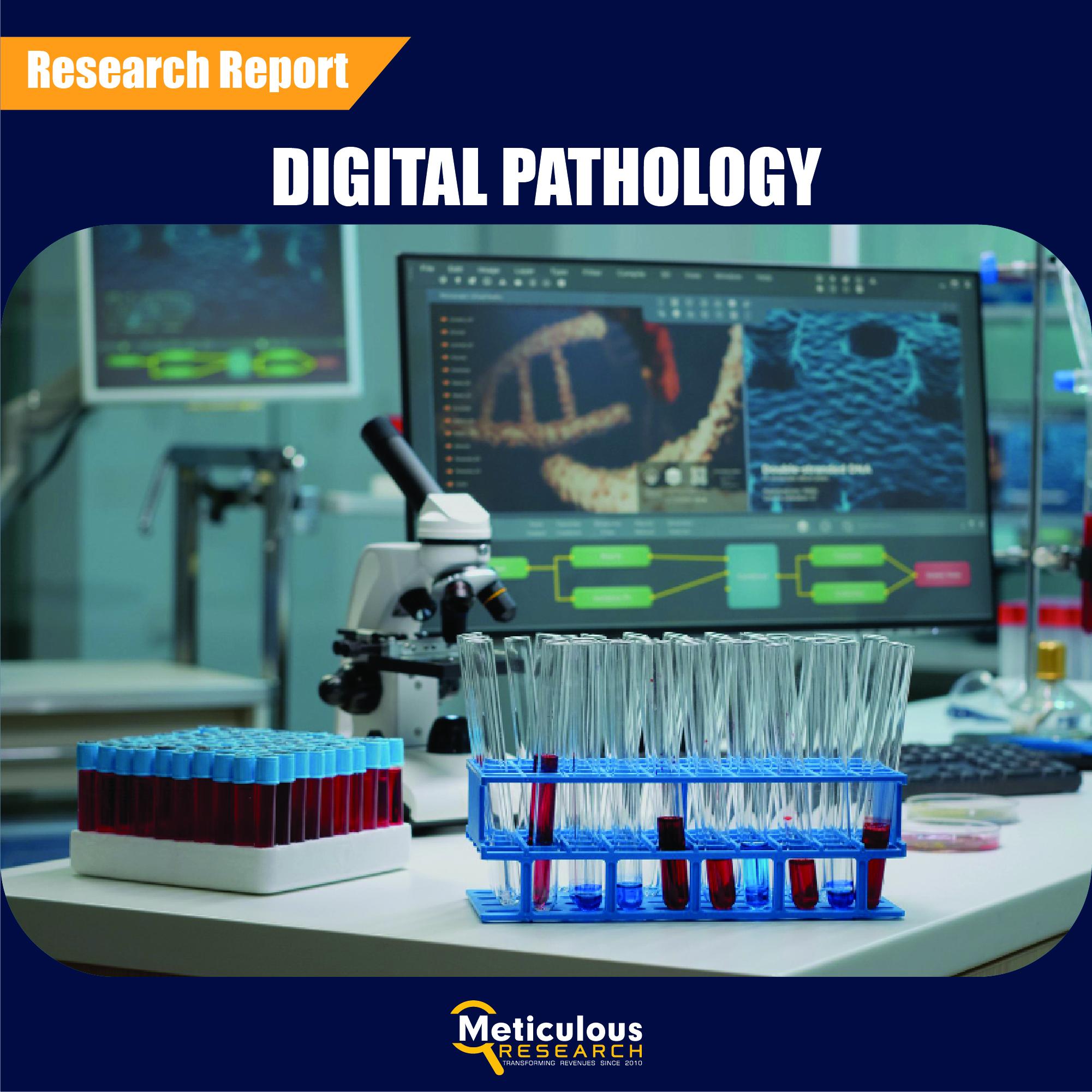Digital Pathology Market Worth $1.86 Billion by 2030

According to this latest publication from Meticulous Research®, the digital pathology market is projected to reach $1.86 billion by 2030, at a CAGR of 8.7% during the forecast period. The growth of this market is attributed to the high prevalence of cancer, the increasing availability of biomarkers and research on biomarkers, the growing number of clinical trials for oncology drugs, the rising demand for accurate detection of genetic and rare diseases, and the high adoption of teleconsulting. Furthermore, growing interests in precision medicine and emerging economies are expected to offer significant opportunities for the market’s growth.
Key Players:
The key players operating in the digital pathology market are 3DHISTECH Ltd. (Hungary), Leica Microsystems (a subsidiary of Danaher Corporation) (Germany), Hamamatsu Photonics K.K. (Japan), Nikon Corporation (Japan), Visiopharm A/S (Denmark), Koninklijke Philips N.V. (Netherlands), F. Hoffmann-La Roche Ltd (Switzerland), Glencoe Software, Inc. (U.S.), XIFIN, Inc. (U.S.), and PerkinElmer Inc. (U.S.).
Download Free Sample Report Here :https://www.meticulousresearch.com/download-sample-report/cp_id=5433
Digital Pathology Market: Future Outlook
The digital pathology market is segmented by Offering (Hardware [Tissue Microarray, Scanners, Other Hardware], Software, Services), Application (Disease Diagnosis, Drug Discovery & Development, Education and Training, Teleconsultation), End User (Hospitals & Clinics, Diagnostic Laboratories, Research Institutes & Academics, Pharmaceutical & Biotechnology Companies), and Geography. The study also evaluates industry competitors and analyzes the market at the regional and country levels.
Based on offering, in 2023, the hardware segment is expected to account for the largest share of the digital pathology market. The large market share of this segment is attributed to the high burden of chronic diseases globally, the rising need for precise diagnosis and personalized care pathways, and the transformation of pathology into a digital discipline is increasing the demand for the associated hardware.
Based on application, the digital pathology market is segmented into disease diagnosis, drug discovery & development, education & training, and teleconsultation. In 2023, the disease diagnosis segment is expected to account for the largest share of the digital pathology market. The large market share of this segment is attributed to the rising geriatric population, the high prevalence of chronic diseases, and the increased adoption of teleconsulting due to the outbreak of the COVID-19 pandemic.
Based on end user, in 2023, the hospitals & clinics segment is expected to account for the largest share of the digital pathology market. The large market share of this segment is attributed to the large number of hospitals & clinics globally, the increased need for digital pathology due to the high demand for pathological tests coupled with the declining number of pathologists, and ongoing research in precision medicine.
This research report analyzes major geographies and provides a comprehensive analysis of the digital pathology market in North America (U.S. and Canada), Europe (Germany, France, U.K., Italy, Spain, and Rest of Europe), Asia-Pacific (China, Japan, India, and Rest of Asia-Pacific), Latin America (Brazil, Mexico, and Rest of Latin America), and the Middle East & Africa.
Based on geography, in 2023, North America is expected to account for the largest share of the digital pathology market, followed by Europe and Asia-Pacific. Furthermore, in 2023, the U.S. is expected to be the largest shareholding market in North America. The market growth in the U.S. is driven by the digitization of pathology services, high investments in R&D, high adoption of advanced technologies, and the increased demand for reliable and faster diagnostics.
Buy Now: https://www.meticulousresearch.com/Checkout/83676724
Increasing Adoption of Digital Pathology Solutions to Enhance Lab Efficiency
Digital pathology enables pathologists to collaborate and work remotely on cases by improving the accuracy of diagnostic techniques and allowing the sharing of digital images beyond geographical limitations. Before the outbreak of COVID-19, the adoption of digital pathology was extremely low due to stringent federal regulations of the U.S. FDA. The adoption increased due to the relaxation of FDA requirements for validating and approving digital pathology-related technology to meet the increased demand during the pandemic.
Contact Us:
Meticulous Research®
Email- sales@meticulousresearch.com
Contact Sales- +1-646-781-8004
Connect with us on LinkedIn- https://www.linkedin.com/company/meticulous-research
- Art
- Causes
- Crafts
- Dance
- Drinks
- Film
- Fitness
- Food
- Spiele
- Gardening
- Health
- Startseite
- Literature
- Musik
- Networking
- Andere
- Party
- Religion
- Shopping
- Sports
- Theater
- Wellness


